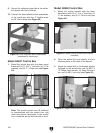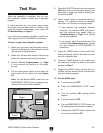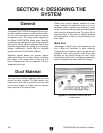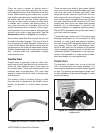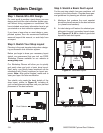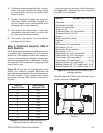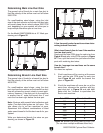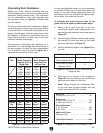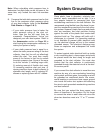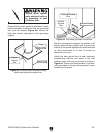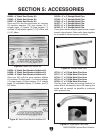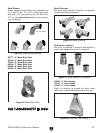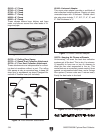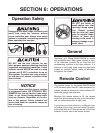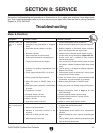
-34-
G0637/G0638 Cyclone Dust Collector
Note: When calculating static pressure loss to
determine if multiple lines can be left open at the
same time, only include the main line numbers
once.
5. Compare the total static pressure loss for that
line to the maximum static pressure rating
of your dust collector (refer to the
Machine
Data Sheets on
Pages 3 & 5).
—If your static pressure loss is below the
static pressure rating of the dust col
-
lector, then the line will most likely be
successful. Congratulations! You've just
designed your own dust system. Refer to
the Accessories section on Page 36 to
start buying the components necessary to
make your system a reality.
—If your static pressure loss is equal to or
above the static pressure rating of the dust
collector, then that line will not effectively
collect the dust. You must then modify
some of the factors in that line to reduce
the static pressure loss. Some of the ways
to do this include 1) installing larger duct,
2) reducing amount of flexible duct used,
3) increasing machine dust port size, 4)
moving machine closer to dust collector to
eliminate duct length, and 5) reducing 90˚
elbows or replacing them with 45˚ elbows.
System Grounding
Since plastic hose is abundant, relatively inex-
pensive, easily assembled and air tight, it is a
very popular material for conveying dust from
woodworking machines to the dust collector. We
recommend using flexible hose (flex-hose) to con
-
nect the woodworking machine to the dust collec
-
tion system. However, plastic flex-hose and plastic
duct are insulators, and dust particles moving
against the walls of the plastic duct create static
electrical build up. This charge will build until it
discharges to a ground. If a grounding medium
is not available to prevent static electrical build
up, the electrical charge will arc to the nearest
grounded source. This electrical discharge may
cause an explosion and subsequent fire inside
the system.
To protect against static electrical build up inside
a non-conducting duct, a bare copper wire should
be placed inside the duct along its length and
grounded to the dust collector. You must also
confirm that the dust collector is continuously
grounded through the electrical circuit to the elec
-
tric service panel.
If you connect the dust collector to more than one
machine by way of a non-conducting branching
duct system and blast gates, the system must still
be grounded as mentioned above. We recom-
mend inserting a continuous bare copper ground
wire inside the entire duct system and attaching
the wire to each grounded woodworking machine
and dust collector.
Be sure that you extend the bare copper wire
down all branches of the system. Do not forget
to connect the wires to each other with wire nuts
when two branches meet at a “Y” or “T” connec
-
tion.



